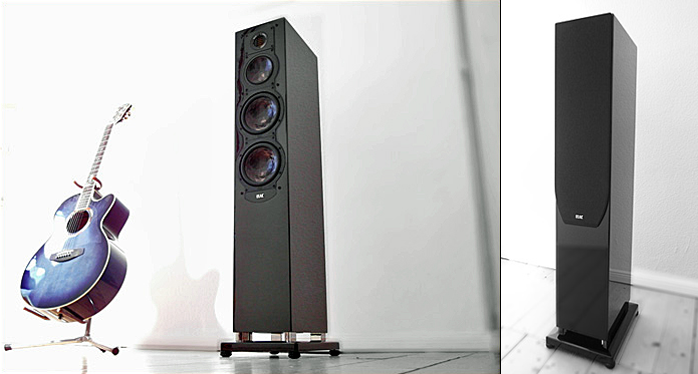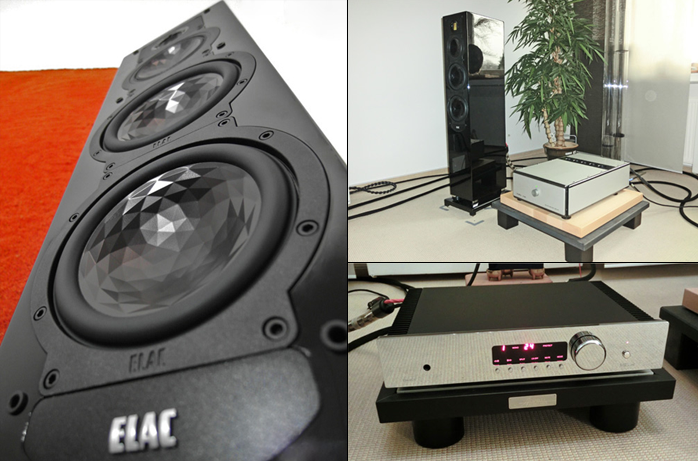 |
04.2012 |
ELAC FS 249 BLACK EDITION
How about spending your evenings with a lithe one of medium height dressed in tight-fitting black? Might she not have a few virtues and abilities you’ve been missing with your current flame? Let me share a few experiences then. But stop now if you feel in the wrong movie or magazine. I’m talking of Elac’s FS 249 Black Edition. That’s a floorstanding loudspeaker of 105cm height and about 29kg weight. Even objectively viewed it amounts to attractive proportions. Needless to say my wife remained informed about everything.
Which prompts the question. Can speakers be feminine? Isn’t proppa gramma der speaker? How about die Elac then? Whatever. After extricating Elac’s FS 249 BE from its shipping carton and removing the protective wrap, the emerging elegance of piano-gloss columns made the female connection relevant. And this lady turned out to be quite accessorized too. The carton contained white cotton gloves, spikes including a soft-nosed variant, rubber plugs for the rear-firing ports (Bass Control) and felt-type foam rings (Jet Dispersion Control) to alter the dispersion pattern of the tweeters for critical rooms. Then there was a lengthy owner’s manual and multi-lingual flyer with well-meaning albeit also naïve advice which must be necessary. Apparently. How about that warning not to connect this passive speaker to your home's electricity directly? I promised solemnly that I wouldn’t do such a dastardly thing. Phew.
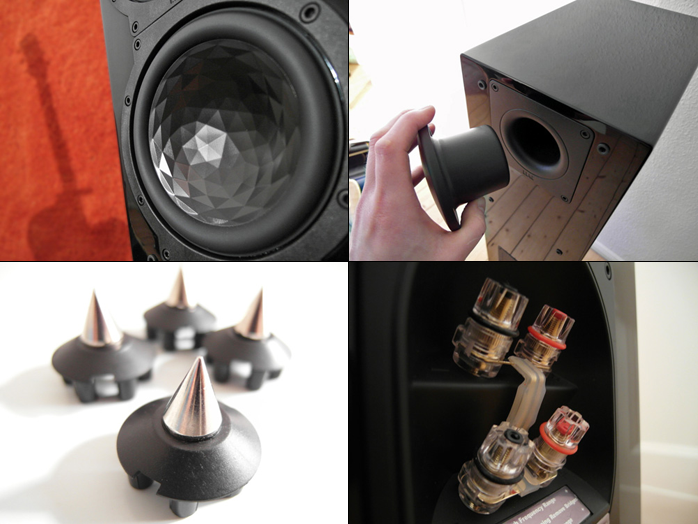 |
With closer wall proximity meanwhile some experimentation is advisable. I played around a bit to suggest that at one meter or less, bass cleanliness and definition improve markedly when the ports are sealed. This effectively counters dreaded room boom. Recorded acoustics will simply lose a bit of scale in trade. The ‘Jet Dispersion Control’ rings both damp and focus treble dispersion. In my well-stuffed room I didn’t benefit from them. Logically Elac recommend their use particularly for echo-laden acoustically harder spaces.
 |
Not that the FS 249SE seemed like a committed humdinger. 90dB sensitivity was plenty friendly. A minimum impedance of 3Ω at 120Hz shouldn’t be an issue for most modern amplifiers. That said, as OTL valve monos my Tenor 75Wi aren’t low-impedance beasts. This had me opt for the burlier transistors instead. I ran the factory-fresh Elacs with a burn-in CD for a few days before hunkering down for an intensive audition. Here experience knew that despite some if not extensive break-in, I might still encounter some remaining treble harshness or incompletely integrated bass. Not with the Elac. Homogeneity was the name of the game from the word go. No dirty treble, no lagging bass. The lady maintained her countenance and composure.
Given the special attention Elac grants the handling of high frequencies with their Jet tweeter, I’d admittedly expected a speaker that would be defined by that band. I'd envisioned errors on the side of occasional harshness for crispness instead of relaxation. But what the Jet III delivered in my room never crossed that line. Instead it felt perfectly integrated for long-term satisfaction. Importantly the 14cm midrange kept up with its pleated speed-demon colleague. The transition into the vocal range occurred without detectable seams. Particularly voices or instruments with an expansive frequency span loose a good deal of innate charm when a speaker fails that integration. Here Stacey Kent exhibited her natural timbre and showed no recognizable losses in coherence or transparency.
|
| The same held true for the 1901 Steinway D which Elisabeth Leonskaja picked for her reading of Beethoven’s Late Piano Sonatas on the classic label Dabringhaus und Grimm. This impressed with its brilliantly realistic piano sound. These sonatas 109 - 111 thrill me to no end. They demonstrate decisively how far ahead of his time the composer from Bonn really had to have been. During my audition I duly had troubles to remain objectively distanced from these masterworks which so cannily preview the expressivity of the later romantics. But enough gushing. Focused again on objective distance I had to admit that the second transition—between midrange and paralleled woofers—wasn’t as invisible as the one higher up. A minor shift in the Steinway’s timbre betrayed where the bass drivers took over. |
|
|
Call it cruel bean counting to even mention such a minor incoherence on €5.000 speakers which became apparent only after intensive listening. I’d not disagree. I'd in fact say that save for this tiny faux pas the interplay between these drivers was really hard to criticize. The Elac transcended any such academic concerns by slipping humbly behind the music to let me know just how well Mrs. Leonskaja had mastered her chosen art to tease out such a scope of expressions from the romantic and introspective to the challenging and dynamically energetic as well as descending lustily into the far left register.
|
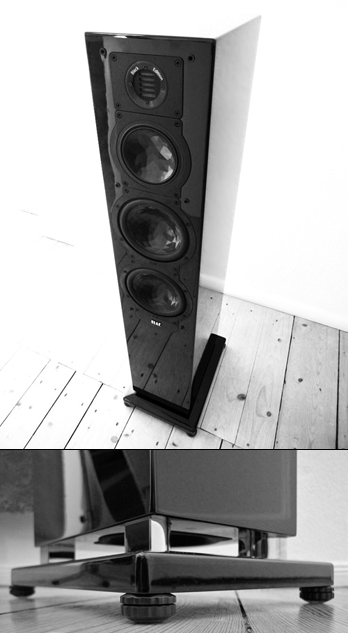 |
| With Elac's specs the latter extends to 28Hz. A quick check with a subwoofer CD proved sufficient output at 30Hz below which things fell off rapidly. That was a respectable showing for a speaker without exorbitant dimensions. |
|
|
The second track of Michael Wollny’s new Wasted & Wanted quotes from the first movement of Mahler’s 5th Symphony to go by "Symphony N°.V, Mov.1, funeral march". Bass and drums underpin that number with a driving bass figure whose repetition conjures up the sad funeral march theme. This bass the Elac reproduced nicely fulsome and sufficiently low. Even so it was clear that woofer definition and speed trailed those truly impressive treble and midrange units. Certain peak performers like Klein & Hummel’s O500D or Audiodata’s Sculpture go farther by adding more infrasonics and blackness without an iota of softening. But Elac’s chosen price point still necessitates compromise to make this minor nit eminently forgivable.
To inspect dynamic behavior Elac’s slim towers had to withstand comparison to my €12.000/pr Kharma CE 3.2 (includes SDSS stands and custom paint) which I find spectacular in this regard. If particularly in the microdynamic range the Kharmas evoke a race car, Elac’s 249 Black Edition was a classic sport car which tracked input signal with fleetness and no nervous twitches. This retained an overview not dissimilar to bigger speakers like Audiodata’s man-sized Sculpture. For achievable max levels enclosure volume and cone surface become the limiting factors of base Physics. Obviously slim-line speakers barely taller than a meter won’t set new records. |
|
|
|
That said the FS 249 was good for impressive SPLs which should delight my colleague Jörg Dames who chalked up minor demerits on this very count for the smaller 2.5-way Elac FS 247 which he reviewed in 2008. With the Black Edition in standard-sized rooms you can launch the proverbial cow airborne without smoking any voice coils. |
| Such loudness stability becomes even more important with orchestral music where extreme voltage swings shouldn’t get compromised or cause the soundstage to collapse, say on Johan Johannsson’s monumental Miner’s Hymns. This multi-movement work for organ, wind orchestra and synthesizer originally was a soundtrack to a US film maker’s eponymous film but readily stands on its own as a Requiem-style composition. As does the film, Islander Johannsson manages with his music to paint a respectful picture of the halcyon days and subsequent decline of Britain’s coal mining and its protagonists during the last century. The production venue was the medieval cathedral in the former mining town of Durham in England’s NorthEast. It is well-known for its exceptional acoustics and even the omnipresent Sting has already recorded in it. |
|
Black Edition replay allowed for relaxed exploits into the multi-layered sound structures of this atmospherically ominous work. Dramatic highlights accompanied by clearly pushed levels not only didn’t lose their effectiveness, the peaks which the Elacs scaled without breaking a sweat sadly remain elusive for my more than twice as costly smaller Dutchies. On this count the speakers from Kiel clearly scored. Kharma’s 3.2 retaliated a bit with its extreme holography and keen nose for actual venue depth where the Elac 249BE lost a few meters of reach. Whilst Durham’s cathedral didn’t shrink to a private prayer chapel, Elac’s ability to rebuild recorded venues in realistic scope and three dimensions was less acute than Kharma’s. This didn’t come as a surprise. Soundstaging is one of the masteries of the two-way Ceramique 3.2. This made it notable that one specific requirement for image focus applied to both speakers equally. I refer to the ability to disappear as apparent sound sources. In my room's 24 square meters which occupy a golden-ratio type rectangle both speakers disappeared impressively. In the sweet spot they were no longer identifiable just as these things should be.
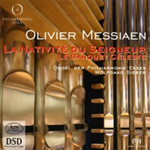 |
Because it was clear that not every shopper interested in the FS 249BE will combine preamps and power amps whose price will seriously multiply that of the speakers, I borrowed a Trigon Energy for a few days to discover how many of the described qualities would survive when the Black Beauties were driven by price-matched amplification. It only took moments to realize ‘a lot’. This €2.500 2x70-watt German integrated veritably burst at the seams with vitality and power. Even when I nastily cued up an SACD with Olivier Messiaen’s early Le Banquet Celeste and La Nativite du Seigneur for organ, I was quite surprised by how self-assured playback of this musically demanding and quite complex fare unwound. |
Here organist Wolfgang Sieber plays a Kuhn organ built into the Alfred-Krupp hall of the Essen Philharmonic which I’m intimately familiar with. I got a good impression of how this giant organ flooded the concert hall with its sounds and how the low registers must have massaged the guts of the audience. Check out the final bars of Le Banquet Celeste. The closing chord is underlaid by a 32-foot register. The longest pipe in such a register exceeds 5 meters and produces 16Hz. That’s a serious stress test for any speaker and amp. The mid-power Trigon maintained good grip over the Elacs and felt muscular yet not coarse. Sure, the overall presentation vis-à-vis my luxury electronics grew more compact and gave up a few iota of magnification power but otherwise this marriage of reason entailed no compromises in listening fun. That leaves me thinking that the full potential of Elac’s 249BE remains within reach of even quality integrated amplifiers (preferably of substantial power).
Conclusion
With departure imminent the question arose what would be left after these happy hours spent together. In my case acknowledgement that the white-spot status of Elac on my personal hifi map was ill deserved. The FS 249BE surprised with bass reach beyond its physical stature. A touch more resolution and this surprise would have been perfect. The neutral midband left no wishes open and together with the seamlessly connected treble became the speaker’s calling card. In mid to well-damped rooms that detailed upper end was perfectly integrated without any spotlighting. In more reflective reverberant spaces the Jet Dispersion Control rings allow for some fine-tuning of the response.
Dynamics and soundstaging tracked elevated expectation for this class. Amplification—including integrateds—may offer a few extra watts to maintain bass control and definition on an adequate niveau. This completely German production carefully avoided all cheap and cheerful special effects. I could hear no emphasis at the frequency extremes nor any favouritism in the vocal band. Such carefully built-in balance suggests a long-lived listening love affair. Adieu mon amour! (Given the author’s vehement insistence the editor’s corrective pen skipped over this somewhat saucy ending).
Psych profile
- Thanks to a universally neutral tonal balance, this speaker plays no favorites with musical genres.
- Plays well accented and with good detail both loudly and quietly. Healthy sensitivity which still appreciates potent amplification.
- Highly resolved finely nuanced treble that’s not extreme but perfectly integrated. The coherent midband exhibits equally high transparency and resolution. Adequate microdynamics.
- Bass is extended and substantial. Here speed and definition are respectable but the FS 249BE isn’t a poster child for accelerated LF transients.
- The Elac manages to completely disappear, i.e. the music decorrelates completely from the enclosures. This creates believable but not extreme soundstaging.
- Suitable for rooms up to 40m². Greater SPL stability than the slim line cosmetics would suggest.
- Overall fit’n’finish are high. That made it all the more disappointing to discover wood screws without counter nuts or proper threading and push-on connectors for the driver hookup wiring. Nonetheless form factor and cosmetics create a living-room friendly tower speaker that should enjoy high spousal acceptance.
Facts:
- Concept: 3-way floorstander
- Sensitivity: 90dB/2.83V/1m
- Nominal impedance: 4 ohms, 3-ohm minimum at 120Hz
- Trim: Black high-gloss
- Other: 10-year warranty, completely made in Germany
|


